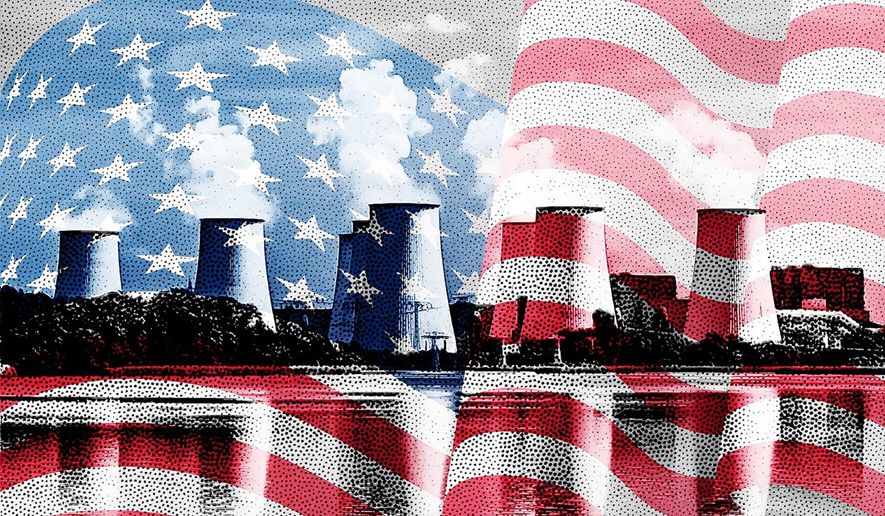OPINION:
Winter officially ended last month, but as we look forward to spring and milder weather, we can’t afford to forget about what happened this past Christmas Eve, when operators of the nation’s largest electric grid serving 65 million Americans had a big problem: Frigid weather had disrupted natural gas supplies to power plants across 13 states, from Pennsylvania south to Virginia.
At the same time, the cold caused cascading equipment failures at coal and natural gas plants, forcing up to a quarter of all electricity generation serving the region to fail all at once. Grid operators at PJM Interconnection scrambled to enact emergency protocols, calling on homes and businesses to curtail energy use and exhausting nearly every option to prevent rolling blackouts at the height of winter.
In the end, disaster was averted — barely. But the fossil plant failures led to a dramatic spike in energy prices and exposed a fundamental challenge facing our nation as we confront the climate crisis. As our climate changes, what used to be once-in-a-century storms are now routine, and our power grid is increasingly vulnerable as fossil fuel power plants fail to perform under stress. Intermittent solar and wind energy prove unequal to the challenge of delivering reliable energy 24/7 — especially in extreme weather, from frigid temperatures to heat waves.
That should concern every American.
But there is hope because while December’s storm exposed the problem, it also exposed a foundational part of the solution: nuclear energy. During the storm, the PJM region’s nuclear plants were operating at near peak capacity, providing a stable supply of carbon-free energy on demand. Without it, the grid certainly would have failed.
Nuclear energy has done more to mitigate the existential threat of climate change — and keep energy costs stable — than any other form of energy today. Nuclear energy provides about half of our country’s carbon-free electricity. It is also the only carbon-free energy source that reliably operates 24/7, 365 days a year. And nuclear energy is, by many measures, the safest way to generate reliable energy.
My 37 years of service in the Navy, including as chief of naval operations and as director of naval reactors, gave me a unique perspective on the immense value nuclear innovation provides to our military and here at home — not just for our energy security, but also for our climate, economy and public health. These are also important aspects of our national security.
In my home state of Virginia, nuclear power provides more than 30% of the commonwealth’s total electricity and 95% of our carbon-free electricity, preventing 16 million metric tons of carbon emissions from entering our atmosphere every year.
Last year, Congress passed the Inflation Reduction Act, which will have positive, transformational and long-lasting impacts, including preserving our nation’s carbon-free nuclear fleet, decarbonizing other industries and creating clean energy jobs that benefit our communities. Before them, lawmakers in New York, New Jersey and Illinois put in place policies that ensure ongoing support for their nuclear stations, maintaining these economic engines and the clean energy, good-paying jobs, and millions in tax dollars and philanthropic support they provide to their local communities.
But there is more to be done. I’m encouraged that multiple bills that demonstrate support for a nuclear innovation ecosystem were recently considered in the latest session of the Virginia Statehouse — specifically, the bill establishing a collaborative Virginia Innovative Nuclear Hub and bolstering investment in nuclear education programs to enhance workforce development passed with bipartisan support.
Virginia leaders still have the opportunity to explore policies that boost the commonwealth as a leader in nuclear innovation, demonstrated by the possibilities of next-generation nuclear technologies. We can explore the potential of advanced reactors, such as small modular reactors, that can be built inexpensively and deployed safely as a reliable energy source.
These policies recognize that nuclear energy is the key to addressing the climate crisis while keeping energy affordable. We can’t ignore the need for further market reforms to prevent close calls like PJM had in December and fully recognize nuclear energy’s unique benefits.
Critical energy markets properly recognize — and prioritize — the value of nuclear energy to perform when customers need them most. With continued support, the nuclear industry stands ready to increase the output of existing nuclear plants by investing in new, more efficient equipment. It can extend the lives of existing nuclear facilities, allowing them to operate for 80 years or more, which will give us more time to replace dirty fossil generation with cleaner resources.
I spent my career working to ensure America’s security and quality of life. Affordable, clean and secure energy is central to those ideals, and nuclear energy is the key to both.
• A retired four-star admiral whose naval service extended over 37 years, John Richardson served as chief of naval operations from 2015 to 2019 and as director of the Naval Nuclear Propulsion Program from 2012 to 2015. He also serves on the board of directors of Constellation, the nation’s largest nuclear energy operator, and BWX Technologies, a Virginia-based nuclear technology company.




Please read our comment policy before commenting.